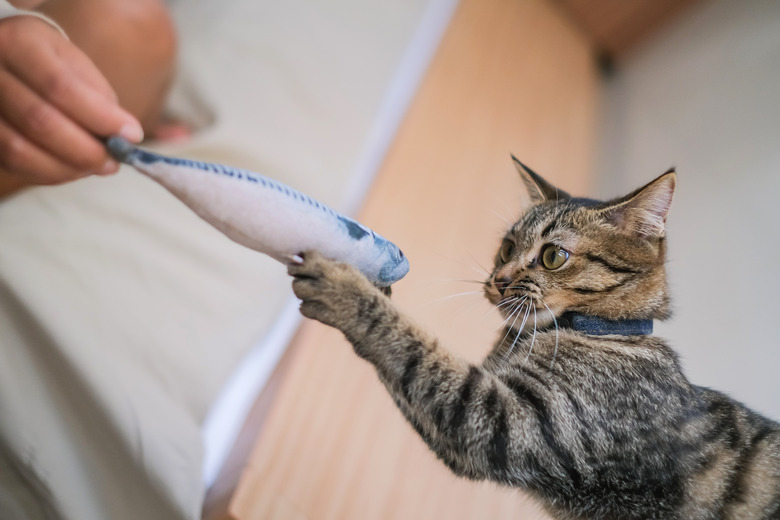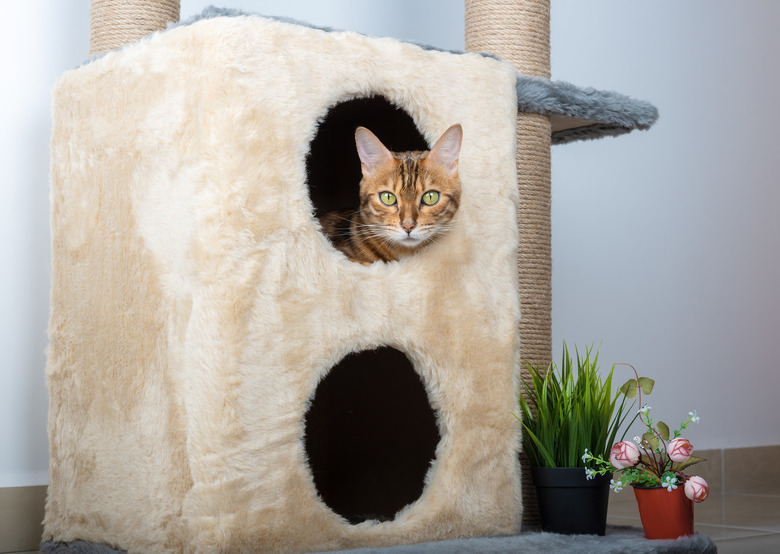5 Essential Enrichment Activities For Indoor Cats
Taking care of a cat physically involves providing food, water, and shelter, of course. But they need more than that. Enrichment activities help care for a cat's mental and emotional health, and shouldn't be overlooked. Cats have what is known as evolutionary traits, which are traits inherited from their wild ancestors and are still recognizable in them today. Some examples of evolutionary traits in cats are stalking, hunting, meat-eating, and burying their waste. When cats don't get to venture outside, some of the needs that these traits require don't get met, which can leave a cat feeling frustrated, depressed, or agitated.
To keep your cat happy and healthy, you can enrich his life with activities. The activities you choose will depend on what your cat enjoys, specifically. Some cats love to stalk and hunt, others like to climb, and some get joy from playing in water. Many cats enjoy all of these things, depending on their mood. Whatever your cat's preference, all cats that are kept indoors full-time require exercise, mental stimulation, and socializing, so it's best to find ways to use what your cat naturally likes to meet these needs.
1. Cat enrichment toys
1. Cat enrichment toys
Giving your cat toys to play with is the easiest of all enrichment activities. Cat enrichment toys can go a long way in preventing boredom, engaging them mentally, and simply keeping them occupied for good stretches of time. The type of toy will depend on what your cat likes, but commonly used toys include cat dancers, which require a cat to focus on an object and jump up to catch it as you bounce it up and down, and toy mice, which can meet their need to stalk and pounce on things. Often, items around the house can be used as cat toys just so long as they're movable and safe, so placing a toilet paper roll, offering a balled-up piece of paper, or even hanging a piece of string can keep your cat entertained and occupied in her own home.
2. Cat scent games
2. Cat scent games
Similar to food puzzles, scent games also allow cats to rely on their natural-born senses to complete a daily task, engaging both their minds and bodies simultaneously. Fortunately, this is also one of the easiest and low-cost enrichment activities you can offer your feline as it only requires creatively placing existing items, like food or toys, around the house for your cat to discover. To play cat scent games with food, simply place a few pieces of dry kibble or a couple of cat treats in a box, even a small one will work! Then, lead your cat to the box and encourage her to explore the area until she finds the food inside the box on her own. This can not only keep cats from becoming bored or destructive, but can also work wonders on their self-esteem and confidence.
3. Cat climbing and scratching trees
3. Cat climbing and scratching trees
Cats have a natural instinct to scratch, or claw, at things. They do this for a number of reasons, including keeping their claws clean, sharp, and growing in a healthy way, leaving their scent on items around the home as a way to clearly "mark" their territory, and to relieve stress. Having a cat tree for climbing and scratching in your home meets a few of a cat's needs: their scratching requirements, their need to climb and perch, and a safe place to hide. If possible, place the cat tree near a window so your cat can perch or lay on the top of it and look outside at birds or other small creatures in comfort.
4. Cat water fountains
4. Cat water fountains
A cat in the wild would always opt for a sip of water from a flowing source over a stagnant pond because running water is more fresh and clean, reducing the risk of ingesting harmful bacteria. Many house cats are drawn to the same thing, and also tend to enjoy watching things that are perpetually in motion as it keeps their focus. You can meet both of these needs with a drinking fountain. A water fountain may not be preferred by all cats, but if your cat tends to run to a running faucet for a sip of water, or spends time pawing or playing in their water dish, then this may be something they will enjoy on a daily basis.
5. Cat food puzzles
5. Cat food puzzles
All pets have a natural need to keep their minds and bodies occupied, including even the most laid-back house cat. Before becoming domesticated, our pet friends relied on hunting to obtain their meals, which many no longer need to do thanks to commercial food that's tidy and efficient. Still, cats enjoy having their minds stimulated, which can be done with food puzzles, which adds a little more to eating than simply bending their head into a bowl. Food puzzles are offered in a variety of styles, and nearly all require cats to move around an object blocking them from reaching their food in order to eat. This can keep your cat busy for hours, and may also assist in preventing overeating or eating too fast, as food morsels are doled out only as quickly as they can unlock them.



